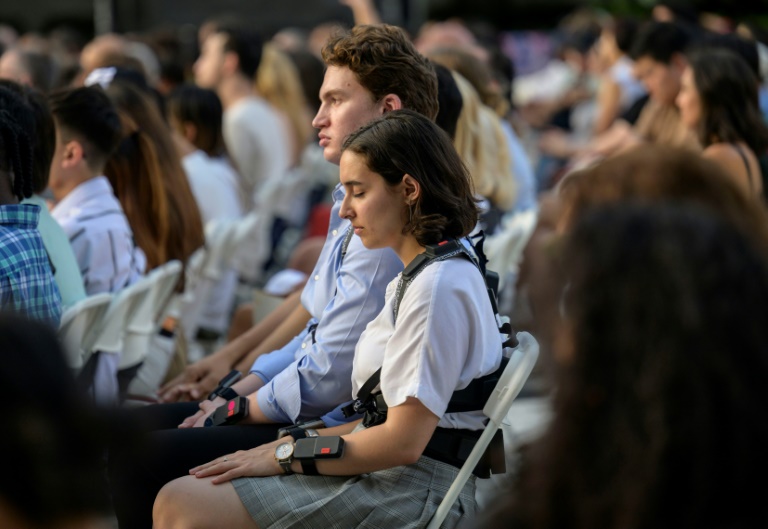Striking the balance between hearing perception and hearing protection

Concertgoers in New York wear haptic suits, which translate music into vibrations on the body, created for the deaf community – Copyright AFP ANGELA WEISS
Humans depend on our hearing in many dynamic situations to make informed decisions about their surroundings. In particular, people working in the armed forces, construction, and public safety, however, depend on their sense of hearing to stay alive.
Of this areas, military personnel are vulnerable. According to the Centers for Disease Control and Prevention, veterans are 30 percent more likely to have severe hearing loss than the general population.
“Hearing loss and tinnitus represent the largest injuries in terms of money spent for the U.S. military, in terms of money spent. For over 3 million affected service members, over a billion dollars per year are spent on medicines, tinnitus therapy, hearing aids, surgery or other medical care,” notes College of Engineering researcher and John Grado Endowed Professor John Casali.
Soldiers, first responders, and construction and industrial workers and others need to hear sounds from all directions to detect threats, hear warning signals, and communicate with co-workers. Yet, at the same time, the delicate neural structure of the inner ear needs to be protected from loud sounds such as gunfire.
It also stands that hearing is always “on” and omnidirectional, unlike vision, which requires focus. When hearing is injured or impaired, its value to human functioning becomes evident.
Researchers in the Grado Department of Industrial and Systems Engineering (ISE) have made significant strides in improving hearing protection and situational awareness for military personnel through the development of a new training system.
This is called the Portable Auditory Localization Awareness Training (PALAT) system thoroughly tests military-grade hearing protectors to see how they impact a soldier’s ability to detect, recognize and localize sound, as compared to the open, natural ear.
A compact, portable training tool, the PALAT system can be set up in an office environment, barracks, or other military-training locales. The fold-up style and size were designed so subjects could easily and efficiently perform the headset training. It also provides trainees with an immediate, objective score for their performance, compares them with other trainees, and adapts to their performance to provide additional training as needed. Involving a diverse team of researchers over the course of 11 years, the final PALAT prototype was developed entirely at Virginia Tech.
The research began when the scientists realized there was no way to objectively assess how well a soldier could detect sound and determine its source and direction. From this sponsored research project, the Detection, Recognition-Identification, Localization and Communication test system – a precursor to PALAT – was created.
The PALAT system not only tests military grade headsets – it efficiently trains users to detect, recognize, and localize sounds, which is critical for maintaining situational awareness while in combat.
As of 2024, the PALAT system has been under beta-testing at several military installations including West Point and the “Gruntworks” facility for the Marines Expeditionary Rifle Squad at Quantico.
Striking the balance between hearing perception and hearing protection
#Striking #balance #hearing #perception #hearing #protection





